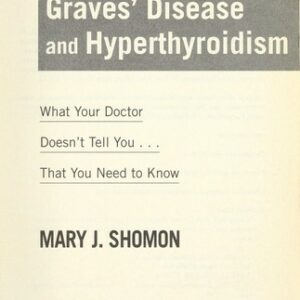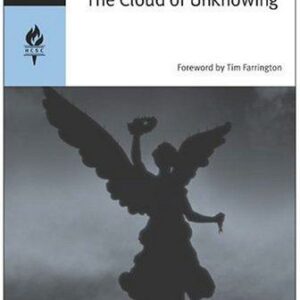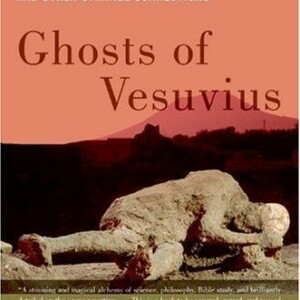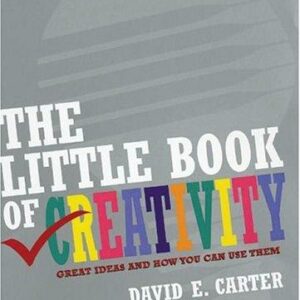Go Tell It on the Mountain
$16.00
| Title | Range | Discount |
|---|---|---|
| Trade Discount | 5 + | 25% |
- Description
- Additional information
Description
Description
One of the most brilliant and provocative American writers of the twentieth century chronicles a fourteen-year-old boy’s spiritual, sexual, and moral struggle of self-invention in this “truly extraordinary” novel (Chicago Sun-Times).
Baldwin’s classic novel opened new possibilities in the American language and in the way Americans understand themselves. With lyrical precision, psychological directness, resonating symbolic power, and a rage that is at once unrelenting and compassionate, Baldwin tells the story of the stepson of the minister of a storefront Pentecostal church in Harlem one Saturday in March of 1935. Originally published in 1953, Baldwin said of his first novel, “Mountain is the book I had to write if I was ever going to write anything else.”“With vivid imagery, with lavish attention to details, Mr. Baldwin has told his feverish story.” —The New York Times
“Brutal, objective and compassionate.” —San Francisco Chronicle
“It is written with poetic intensity and great narrative skill.” —Harper’s
“Strong and powerful.” —Commonweal
“A sense of reality and vitality that is truly extraordinary. . . . He knows Harlem, his people, and the language they use.” —Chicago Sun-Times
“This is a distinctive book, both realistic and brutal, but a novel of extraordinary sensitivity and poetry.” —Chicago Sunday TribuneJAMES BALDWIN was born on August 2, 1924, and educated in New York. His first novel, Go Tell It on the Mountain, appeared in 1953 to excellent reviews and immediately was recognized as establishing a profound and permanent new voice in American letters. “Mountain is the book I had to write if I was ever going to write anything else,” he remarked. Baldwin’s play The Amen Corner was first performed at Howard University in 1955 (it was staged commercially in the 1960s), and his acclaimed collection of essays Notes of a Native Son, was published the same year. A second collection of essays, Nobody Knows My Name, was published in 1961 between his novels Giovanni’s Room (1956) and Another Country (1961).
The appearance of The Fire Next Time in 1963, just as the civil rights movement was exploding across the American South, galvanized the nation and continues to reverberate as perhaps the most prophetic and defining statement ever written of the continuing costs of Americans’ refusal to face their own history. It became a national bestseller, and Baldwin was featured on the cover of Time magazine. Critic Irving Howe said that The Fire Next Time achieved “heights of passionate exhortation unmatched in modern American writing.” In 1964 Blues for Mister Charlie, his play based on the murder of a young black man in Mississippi, was produced by the Actors Studio in New York. That same year, Baldwin was made a member of the National Institute of Arts and Letters and collaborated with the photographer Richard Avedon on Nothing Personal, a series of portraits of America intended as a eulogy for the slain Medger Evers. A collection of short stories, Going to Meet the Man, was published in 1965, and in 1968, Tell Me How Long the Train’s Been Gone, his last novel of the 1960s appeared.
In the 1970s he wrote two more collections of essays and cultural criticism: No Name in the Street (1972) and The Devil Finds Work (1976). He produced two novels: the bestselling If Beale Street Could Talk (1974) and Just Above My Head (1979) and also a children’s book Little Man, Little Man: A Story of Childhood (1976). He collaborated with Margaret Mead on A Rap on Race (1971) and with the poet-activist Nikki Giovanni on A Dialogue (1973). He also adapted Alex Haley’s The Autobiography of Malcolm X into One Day When I Was Lost.
In the remaining years of his life, Baldwin produced a volume of poetry, Jimmy’s Blues (1983), and a final collection of essays, The Price of the Ticket. Baldwin’s last work, The Evidence of Things Not Seen (1985), was prompted by a series of child murders in Atlanta. Baldwin was made a Commander of the French Legion of Honor in June 1986. Among the other awards he received are a Eugene F. Saxon Memorial Trust Award, a Rosenwald fellowship, a Guggenheim fellowship, a Partisan Review fellowship, and a Ford Foundation grant.
James Baldwin died at his home in Saint-Paul-de-Vence in France on December 1, 1987.Reading Group Guide
Go Tell It on the Mountain
A Novel
By James Baldwin
Introduction
Gaining power from its nuanced portrait of Black life and spirituality, James Baldwin’s deeply perceptive debut novel, Go Tell It on the Mountain, is a compelling story of a young boy’s coming of age that established Baldwin as one of the most celebrated writers of the twentieth century.
On the morning of his fourteenth birthday, John Grimes realizes two things: he has sinned and he does not want to grow up to be a Pentecostal minister like his father. With these two realizations, Baldwin’s Go Tell It on the Mountain chronicles John’s struggle to assert his own identity while in the throes of moral, religious, and sexual turmoil that threatens to overcome him. While enmeshed in his greatest desires and his deepest fears, the prayers of John’s aunt, father, and mother will untangle a decades-long history that spans from slavery to the Great Migration and reveals the role of the church as a source of both salvation and repression for generations of John’s family.
The following questions are designed to enrich your discussion of James Baldwin’s Go Tell It on the Mountain. We hope they encourage thoughtful reflection and cultivate a deeper understanding of this searing debut, which positioned Baldwin as the voice of a generation.
1. Go Tell It on the Mountain is interspersed with prayers, hymns, and biblical verses as epigraphs between sections and as dialogue within chapters. Why do you think Baldwin chose to structure the novel in this way? How does this structure amplify your understanding of the totality of the church in the lives of the characters?
2. The novel is set primarily in 1935 Harlem. How does the time period and location impact the novel’s plot and themes? As the characters grapple with godly aspirations and worldly desires, what challenges and temptations does the city present? In the end, are any of the characters able to harmonize their physical and metaphysical landscapes?
3. We meet John Grimes on his fourteenth birthday with the explanation that this was the day he realized he did not want to be like his father. What events solidified this decision? Have you ever felt pressure to follow in the footsteps of a parent or guardian? Share your own experience of confronting those expectations.
4. Reflecting on his family, John wonders, “If God’s power was so great, why were their lives so troubled?” (page 143). Describe the Grimes family. Despite being deeply concerned with living a devout life, why do you think their lives were so troubled?
5. Gabriel is positioned as the religious, authoritative, and financial head of his family. How does Gabriel complicate his family’s view on Christianity with his anger, abuse, and lies? Do you think his beliefs excuse his behavior?
6. Christian values shape each character’s views on spirituality, sexuality, and morality. What does it take to be a good man or woman according to the church’s teachings? What must be adopted, and what must be sacrificed? While each character struggles to live up to these standards, whose shortcomings are excused and whose are punished?
7. “Florence’s Prayer” illuminates the complex relationship between religion and slavery in the American South. How is religion used to justify slavery and also bring about its end? In what ways do formerly enslaved characters use biblical stories to understand their own suffering? Decades after emancipation, why do you think the novel’s characters return to religion during times of racial strife?
8. Aunt Florence is the first of many characters in the novel to flee the South during the Great Migration. Why does she leave, and what events are set in motion within her family as a result of this decision? What does the North represent to the novel’s migratory characters, including Elizabeth, Richard, and Gabriel? Does New York meet their expectations?
9. Go Tell It on the Mountain sheds light on the lives of Black women as they navigate their ambitions, realize their sexuality, and face the difficult realities of love, marriage, and motherhood. How are their options limited by forces such as the church and patriarchal social conventions in the early twentieth century? What is the danger of being labeled a “fallen woman,” and what lengths do these women go to to avoid being perceived in this way?
10. The story of Deborah’s rape and its lasting impact on her life is horrific and distressing. How does the assault shape the town’s perception of her? Why does Gabriel choose to marry her?
11. What is the root of Florence’s hatred for her brother Gabriel? Do you think her anger is justified? What truths are revealed in their final confrontation?
12. A recurring image in the novel is of the steep climb up the side of the mountain. What does this mountain represent? What is waiting at the top, and why is the climb so difficult? In the end, do any of the characters make it up?
13. Gabriel spends much of his adult life trying to atone for the sins of his past. Do you think marrying Elizabeth and raising John gave him the closure he desired? By the end of the novel, has he forgiven himself or achieved the Lord’s forgiveness that he strives for?
14. Elizabeth is described by her husband as “hardhearted, stiff-necked, and hard to bend” (page 111). Return to the early pages of “Elizabeth’s Prayer.” How is her upbringing shaped by her father’s and aunt’s opposing views, and what impact did it have on her own views on religion and morality? In what ways does she resist her husband’s authority and control?
15. The novel’s main characters all wrestle with their fears of religious punishment and the ever-present threat of destruction. How do they cope with this pressure, and what solutions does the church provide? How does the desire to be saved from destruction and save loved ones link the characters to each other?
16. Go Tell It on the Mountain speaks to themes of ancestry and inheritance. Reflect on Gabriel’s relationship with his sons Royal, John, and Roy. Why does he give his biological children the name Royal, and why is he troubled by the fact that only John has been saved?
17. Who is Elisha, and what is his role in the church? Why do you think he is an important figure in John’s life? What is the significance of his kiss at the end of the novel?
I looked down the line,
And I wondered.
Everyone had always said that john would be a preacher when he grew up, just like his father. It had been said so often that John, without ever thinking about it, had come to believe it himself. Not until the morning of his fourteenth birthday did he really begin to think about it, and by then it was already too late.
His earliest memories—which were in a way, his only memories—were of the hurry and brightness of Sunday mornings. They all rose together on that day; his father, who did not have to go to work, and led them in prayer before breakfast; his mother, who dressed up on that day, and looked almost young, with her hair straightened, and on her head the close-fitting white cap that was the uniform of holy women; his younger brother, Roy, who was silent that day because his father was home. Sarah, who wore a red ribbon in her hair that day, and was fondled by her father. And the baby, Ruth, who was dressed in pink and white, and rode in her mother’s arms to church.
The church was not very far away, four blocks up Lenox Avenue, on a corner not far from the hospital. It was to this hospital that his mother had gone when Roy, and Sarah, and Ruth were born. John did not remember very clearly the first time she had gone, to have Roy; folks said that he had cried and carried on the whole time his mother was away; he remembered only enough to be afraid every time her belly began to swell, knowing that each time the swelling began it would not end until she was taken from him, to come back with a stranger. Each time this happened she became a little more of a stranger herself. She would soon be going away again, Roy said—he knew much more about such things than John. John had observed his mother closely, seeing no swelling yet, but his father had prayed one morning for the “little voyager soon to be among them,” and so John knew that Roy spoke the truth.
Every Sunday morning, then, since John could remember, they had taken to the streets, the Grimes family on their way to church. Sinners along the avenue watched them—men still wearing their Saturday-night clothes, wrinkled and dusty now, muddy-eyed and muddy-faced; and women with harsh voices and tight, bright dresses, cigarettes between their fingers or held tightly in the corners of their mouths. They talked, and laughed, and fought together, and the women fought like the men. John and Roy, passing these men and women, looked at one another briefly, John embarrassed and Roy amused. Roy would be like them when he grew up, if the Lord did not change his heart. These men and women they passed on Sunday mornings had spent the night in bars, or in cat houses, or on the streets, or on rooftops, or under the stairs. They had been drinking. They had gone from cursing to laughter, to anger, to lust. Once he and Roy had watched a man and woman in the basement of a condemned house. They did it standing up. The woman had wanted fifty cents, and the man had flashed a razor.
John had never watched again; he had been afraid. But Roy had watched them many times, and he told John he had done it with some girls down the block.
And his mother and father, who went to church on Sundays, they did it too, and sometimes John heard them in the bedroom behind him, over the sound of rats’ feet, and rat screams, and the music and cursing from the harlot’s house downstairs.
Their church was called the Temple of the Fire Baptized. It was not the biggest church in Harlem, nor yet the smallest, but John had been brought up to believe it was the holiest and best. His father was head deacon in this church—there were only two, the other a round, black man named Deacon Braithwaite—and he took up the collection, and sometimes he preached. The pastor, Father James, was a genial, well-fed man with a face like a darker moon. It was he who preached on Pentecost Sundays, and led revivals in the summertime, and anointed and healed the sick.
On Sunday mornings and Sunday nights the church was always full; on special Sundays it was full all day. The Grimes family arrived in a body, always a little late, usually in the middle of Sunday school, which began at nine o’clock. This lateness was always their mother’s fault—at least in the eyes of their father; she could not seem to get herself and the children ready on time, ever, and sometimes she actually remained behind, not to appear until the morning service. When they all arrived together, they separated upon entering the doors, father and mother going to sit in the Adult Class, which was taught by Sister McCandless, Sarah going to the Infant’s Class, John and Roy sitting in the Intermediate, which was taught by Brother Elisha.
When he was young, John had paid no attention in Sunday school, and always forgot the golden text, which earned him the wrath of his father. Around the time of his fourteenth birthday, with all the pressures of church and home uniting to drive him to the altar, he strove to appear more serious and therefore less conspicuous. But he was distracted by his new teacher, Elisha, who was the pastor’s nephew and who had but lately arrived from Georgia. He was not much older than John, only seventeen, and he was already saved and was a preacher. John stared at Elisha all during the lesson, admiring the timbre of Elisha’s voice, much deeper and manlier than his own, admiring the leanness, and grace, and strength, and darkness of Elisha in his Sunday suit, wondering if he would ever be holy as Elisha was holy. But he did not follow the lesson, and when, sometimes, Elisha paused to ask John a question, John was ashamed and confused, feeling the palms of his hands become wet and his heart pound like a hammer. Elisha would smile and reprimand him gently, and the lesson would go on.
Roy never knew his Sunday school lesson either, but it was different with Roy—no one really expected of Roy what was expected of John. Everyone was always praying that the Lord would change Roy’s heart, but it was John who was expected to be good, to be a good example.
When Sunday school service ended there was a short pause before morning service began. In this pause, if it was good weather, the old folks might step outside a moment to talk among themselves. The sisters would almost always be dressed in white from crown to toe. The small children, on this day, in this place, and oppressed by their elders, tried hard to play without seeming to be disrespectful of God’s house. But sometimes, nervous or perverse, they shouted, or threw hymn-books, or began to cry, putting their parents, men or women of God, under the necessity of proving—by harsh means or tender—who, in a sanctified household, ruled. The older children, like John or Roy, might wander down the avenue, but not too far. Their father never let John and Roy out of his sight, for Roy had often disappeared between Sunday school and morning service and had not come back all day.
The Sunday morning service began when Brother Elisha sat down at the piano and raised a song. This moment and this music had been with John, so it seemed, since he had first drawn breath. It seemed that there had never been a time when he had not known this moment of waiting while the packed church paused—the sisters in white, heads raised, the brothers in blue, heads back; the white caps of the women seeming to glow in the charged air like crowns, the kinky, gleaming heads of the men seeming to be lifted up—and the rustling and the whispering ceased and the children were quiet; perhaps someone coughed, or the sound of a car horn, or a curse from the streets came in; then Elisha hit the keys, beginning at once to sing, and everybody joined him, clapping their hands, and rising, and beating the tambourines.
The song might be: Down at the cross where my Saviour died!
Or: Jesus, I’ll never forget how you set me free!
Or: Lord, hold my hand while I run this race!
They sang with all the strength that was in them, and clapped their hands for joy. There had never been a time when John had not sat watching the saints rejoice with terror in his heart, and wonder. Their singing caused him to believe in the presence of the Lord; indeed, it was no longer a question of belief, because they made that presence real. He did not feel it himself, the joy they felt, yet he could not doubt that it was, for them, the very bread of life—could not doubt it, that is, until it was too late to doubt. Something happened to their faces and their voices, the rhythm of their bodies, and to the air they breathed; it was as though wherever they might be became the upper room, and the Holy Ghost were riding on the air. His father’s face, always awful, became more awful now; his father’s daily anger was transformed into prophetic wrath. His mother, her eyes raised to heaven, hands arced before her, moving, made real for John that patience, that endurance, that long suffering, which he had read of in the Bible and found so hard to imagine.
On Sunday mornings the women all seemed patient, all the men seemed mighty. While John watched, the Power struck someone, a man or woman; they cried out, a long, wordless crying, and, arms outstretched like wings, they began the Shout. Someone moved a chair a little to give them room, the rhythm paused, the singing stopped, only the pounding feet and the clapping hands were heard; then another cry, another dancer; then the tambourines began again, and the voices rose again, and the music swept on again, like fire, or flood, or judgment. Then the church seemed to swell with the Power it held, and, like a planet rocking in space, the temple rocked with the Power of God. John watched, watched the faces, and the weightless bodies, and listened to the timeless cries. One day, so everyone said, this Power would possess him; he would sing and cry as they did now, and dance before his King. He watched young Ella Mae Washington, the seventeen-year-old granddaughter of Praying Mother Washington, as she began to dance. And then Elisha danced.
At one moment, head thrown back, eyes closed, sweat standing on his brow, he sat at the piano, singing and playing; and then, like a great, black cat in trouble in the jungle, he stiffened and trembled, and cried out. Jesus, Jesus, oh Lord Jesus! He struck on the piano one last, wild note, and threw up his hands, palms upward, stretched wide apart. The tambourines raced to fill the vacuum left by his silent piano, and his cry drew answering cries. Then he was on his feet, turning, blind, his face congested, contorted with this rage, and the muscles leaping and swelling in his long, dark neck. It seemed that he could not breathe, that his body could not contain this passion, that he would be, before their eyes, dispersed into the waiting air. His hands, rigid to the very fingertips, moved outward and back against his hips, his sightless eyes looked upward, and he began to dance. Then his hands closed into fists, and his head snapped downward, his sweat loosening the grease that slicked down his hair; and the rhythm of all the others quickened to match Elisha’s rhythm; his thighs moved terribly against the cloth of his suit, his heels beat on the floor, and his fists moved beside his body as though he were beating his own drum. And so, for a while, in the center of the dancers, head down, fists beating, on, on, unbearably, until it seemed the walls of the church would fall for very sound; and then, in a moment, with a cry, head up, arms high in the air, sweat pouring from his forehead, and all his body dancing as though it would never stop. Sometimes he did not stop until he fell—until he dropped like some animal felled by a hammer—moaning, on his face. And then a great moaning filled the church.
There was sin among them. One Sunday, when regular service was over, Father James had uncovered sin in the congregation of the righteous. He had uncovered Elisha and Ella Mae. They had been “walking disorderly”; they were in danger of straying from the truth. And as Father James spoke of the sin that he knew they had not committed yet, of the unripe fig plucked too early from the tree—to set the children’s teeth on edge—John felt himself grow dizzy in his seat and could not look at Elisha where he stood, beside Ella Mae, before the altar. Elisha hung his head as Father James spoke, and the congregation murmured. And Ella Mae was not so beautiful now as she was when she was singing and testifying, but looked like a sullen, ordinary girl. Her full lips were loose and her eyes were black—with shame, or rage, or both. Her grandmother, who had raised her, sat watching quietly, with folded hands. She was one of the pillars of the church, a powerful evangelist and very widely known. She said nothing in Ella Mae’s defense, for she must have felt, as the congregation felt, that Father James was only exercising his clear and painful duty; he was responsible, after all, for Elisha, as Praying Mother Washington was responsible for Ella Mae. It was not an easy thing, said Father James, to be the pastor of a flock. It might look easy to just sit up there in the pulpit night after night, year in, year out, but let them remember the awful responsibility placed on his shoulders by almighty God—let them remember that God would ask an accounting of him one day for every soul in his flock. Let them remember this when they thought he was hard, let them remember that the Word was hard, that the way of holiness was a hard way. There was no room in God’s army for the coward heart, no crown awaiting him who put mother, or father, sister, or brother, sweetheart, or friend above God’s will. Let the church cry amen to this! And they cried: “Amen! Amen!”
The Lord had led him, said Father James, looking down on the boy and girl before him, to give them a public warning before it was too late. For he knew them to be sincere young people, dedicated to the service of the Lord—it was only that, since they were young, they did not know the pitfalls Satan laid for the unwary. He knew that sin was not in their minds—not yet; yet sin was in the flesh; and should they continue with their walking out alone together, their secrets and laughter, and touching of hands, they would surely sin a sin beyond all forgiveness. And John wondered what Elisha was thinking—Elisha, who was tall and handsome, who played basketball, and who had been saved at the age of eleven in the improbable fields down south. Had he sinned? Had he been tempted? And the girl beside him, whose white robes now seemed the merest, thinnest covering for the nakedness of breasts and insistent thighs—what was her face like when she was alone with Elisha, with no singing, when they were not surrounded by the saints? He was afraid to think of it, yet he could think of nothing else; and the fever of which they stood accused began also to rage in him.US
Additional information
Additional information
| Weight | 8.4 oz |
|---|---|
| Dimensions | 0.6800 × 5.1800 × 7.9700 in |
| Author | |
| Series | |
| Imprint | |
| ISBN-13 | |
| ISBN-10 | |
| BISAC | |
| Format | |
| Audience | |
| Subjects | urban fiction, banned books, classic books, black history books, fiction books, popular books, historical fiction best sellers, african american urban fiction, college gifts, classic literature, top selling books, james baldwin books, giovannis room, banned books list, mens birthday gift, go tell it on the mountain by james baldwin, go tell it on the mountain baldwin, family, FIC049070, let it go, black authors, literary fiction, James Baldwin, book club, black history, novels, slavery, classics, fiction, FIC045000, drama, romance, classic |











